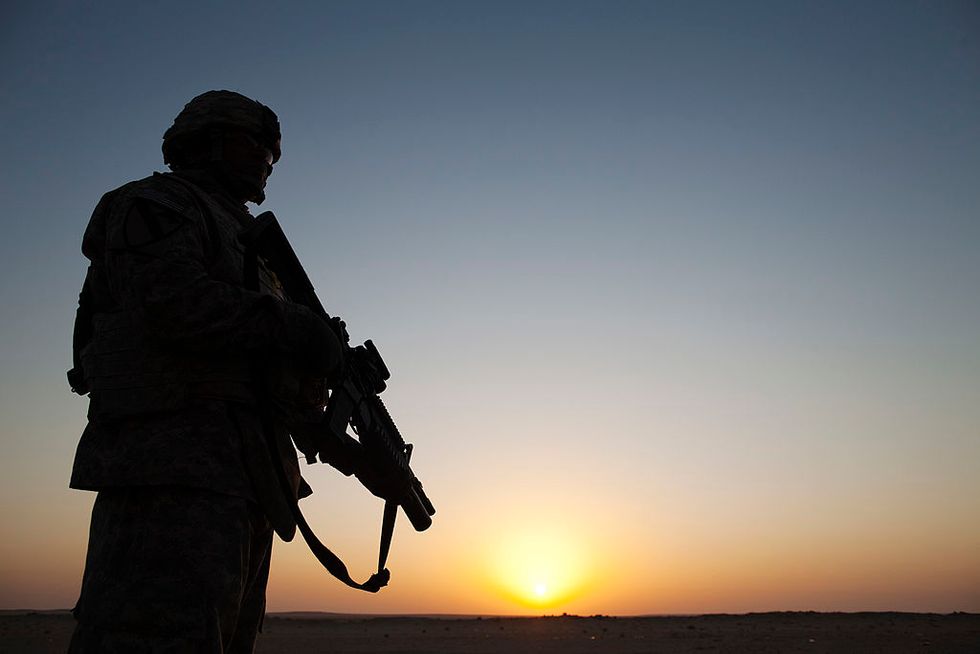
(Lucas Jackson-Pool/Getty Images)

A new study conducted by military researchers may help to explain the unique and painful symptoms U.S. military veterans often experience after serving in combat zones.
The team of military scientists at the Uniformed Services University of the Health Sciences (USU) in Maryland announced in a report Friday that symptoms like headaches and fuzzy thinking can point to a special pattern of brain scarring observed in men who died days or years after being exposed to powerful explosions.
According the USU report, the scarring seen in the brains of combat vets is different from that observed in people with other types of brain trauma, such as sports or automobile accidents.
 U.S. Army photo by Sgt. Joe Padula, 2nd BCT PAO, 101st Abn. Div.
U.S. Army photo by Sgt. Joe Padula, 2nd BCT PAO, 101st Abn. Div.
The team shared that their next step is figuring out how to spot the same damage in combat veterans who are still alive, and to explore ways to help them.
"What we are detecting is the brain attempting to heal damage and that's the scarring," Dr. Daniel Perl of USU told NBC News.
The list of symptoms included under the phenomenon known as “shell shock" — headaches, difficulty concentrating, sleep disorders, failing memory, depression and anxiety — have been consistent among combat personnel in war after war. The modern medical term is “traumatic brain injury” or TBI.
Perl and his team examined the donated brains of eight men who survived explosive attacks but died later on — some from physical injuries, others from causes that may have been influenced by TBI: suicide and drug overdoses.
They compared these brains to those of 15 civilians who experienced various other types of brain damage, including concussions resulting from sports or car accidents. The brains also included people who had abused opioid drugs over time, in case the drug abuse seen among some veterans caused a pattern of brain damage that was not directly related to the explosions.
One of the veterans in the study was a highly decorated career military officer.
"Colleagues considered him highly competent, reliable, and emotionally stable," the USU team wrote in their report, which was published in the Lancet Neurology journal.
"According to members of his team, they routinely experienced blast exposures during training exercises and combat missions with bombs landing or improvised explosive devices detonating in close proximity," they added.
After he retired, the veteran, who is not identified, revealed that he did not report his TBIs while in the service for fear that he would be discharged.
"He complained of headache and memory problems and described trouble maintaining mental focus, which he attributed to severe sleep disturbance. He often lost coherence of thought and jumbled his speech,” the scientists noted.
The man’s wife said that he moved slowly, forgot family plans and grew uncharacteristically angry at times. An MRI scan showed nothing unusual, but month later, he shot and killed himself.
Perl and his colleagues also looked at the brains of civilians who suffered chronic traumatic encephalopathy (CTE), the pattern of brain damage commonly seen in football players who have had multiple concussions.
But what they saw in the veterans was unique, and according to Perl, this makes perfect sense.
Combat veterans whose brain injuries occurred just days before they died had less scarring, Perl said.
"We saw the embryonic formation of a scar," he told NBC, something that he claims strengthens the theory that the blast itself causes the scarring.
“I think it is fair to say that if we are correct … [that] this scarring produces dysfunction in this area of the brain, this would produce significant problems in terms of functioning and dealing with day-to-day life," he said.
Now it's critical to find a way to identify the scarring in living servicemen, he said.
"Now that we know where to look and what we are looking for, I am confident we will find a way to identify this ... so we can try to help them," he said.